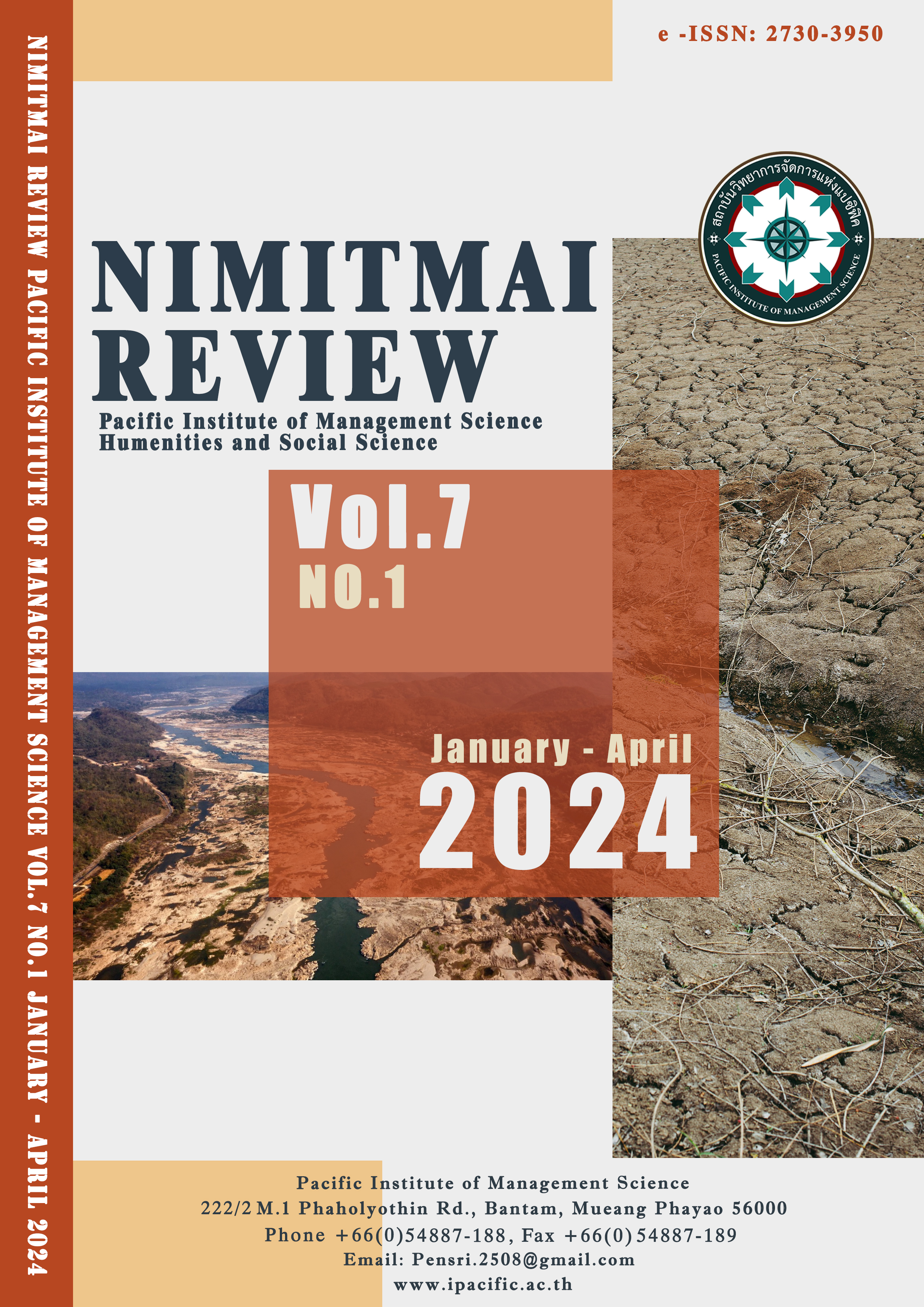Factors Influencing Employee’s Satisfaction with Public Space in Medical and Elderly Institutions
คำสำคัญ:
Keywords: Employees, Space Quality, Perceived Value, Employee Expectationsบทคัดย่อ
This Article aimed to study, to examine the relationship between spatial quality, perceived value, employee expectations and employee satisfaction, like wise investigate the mediating effect of perceived value on the relationship between spatial quality and employee satisfaction, and analyse the mediating effect of employee expectation on the relationship between spatial quality and employee satisfaction. Data were collected from employees of medical and nursing institutions in Shanxi Province, China (n=463). The tool used to collect the data was spss21.0 and the analysis software was AMOS21.0. data were analysed through descriptive statistics. Spatial quality has a significant effect on employee satisfaction; spatial quality has a significant effect on perceived value; spatial quality has a significant effect on employee expectation; employee expectation has a significant effect on perceived value; perceived value has a significant effect on employee satisfaction; employee expectation has a significant effect on employee satisfaction; perceived value has a mediating effect between spatial quality and employee satisfaction; employee expectation has a mediating effect between spatial quality has a mediating effect on employee satisfaction. Suggestions Based on the model study in this thesis, it is recommended that hospital logistics and other employee can take the following steps to improve spatial quality, employee satisfaction, employee expectations and perceived value. Strengthen the maintenance and renewal of equipment: hospital logistics can regularly inspect medical equipment, furniture, air conditioning and other facilities, and timely repair or replace ageing equipment to ensure that the facilities and equipment are in good condition. And other employee can improve their service awareness and service quality through regular training to provide a better service experience for hospital employee and enhance their perceived value and satisfaction.
เอกสารอ้างอิง
Bedimo-Rung, et al. (2005). The significance of parks to physical activity and public health: a conceptual model. American journal of preventive medicine, 28(2), 159-168.
Cooke, F. Let al. (2019). Can a supportive workplace impact employee resilience in a high-pressure performance environment? An investigation of the Chinese banking industry. Applied Psychology, 68(4), 695-718.
Francis, J., et al (2012). Quality or quantity? Exploring the relationship between Public Open Space attributes and mental health in Perth, Western Australia. Social science & medicine, 74(10), 1570-1577.
Lai, W. T., & Chen, C. F. (2011). Behavioral intentions of public transit passengers—The roles of service quality, perceived value, satisfaction and involvement. Transport policy, 18(2), 318-325.
Li, X., et al. (2016). Urbanization and health in China, thinking at the national, local and individual levels. Environmental Health, 15, 113-123.
Moller, T., & Kettley, S. (2017). Wearable health technology design: A humanist accessory approach. International Journal of Design, 11(3), 1-49.
Ozguner, Z., & Ozguner, M. (2014). A managerial point of view on the relationship between of Maslow's hierarchy of needs and Herzberg's dual factor theory. International Journal of Business and Social Science, 5(7).
ดาวน์โหลด
เผยแพร่แล้ว
รูปแบบการอ้างอิง
ฉบับ
ประเภทบทความ
สัญญาอนุญาต
ลิขสิทธิ์ (c) 2024 Nimitmai Review Journal

อนุญาตภายใต้เงื่อนไข Creative Commons Attribution-NonCommercial-NoDerivatives 4.0 International License.



